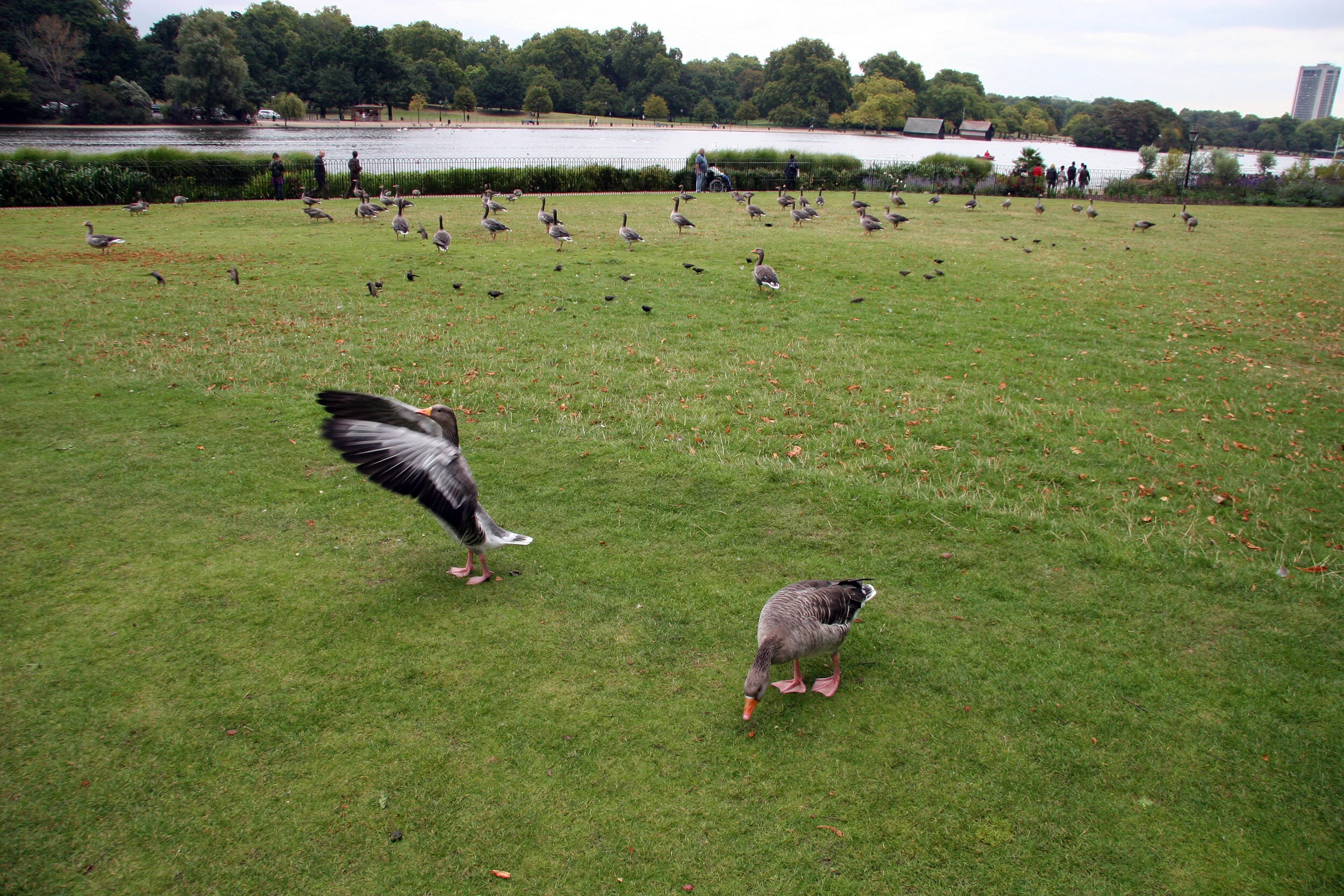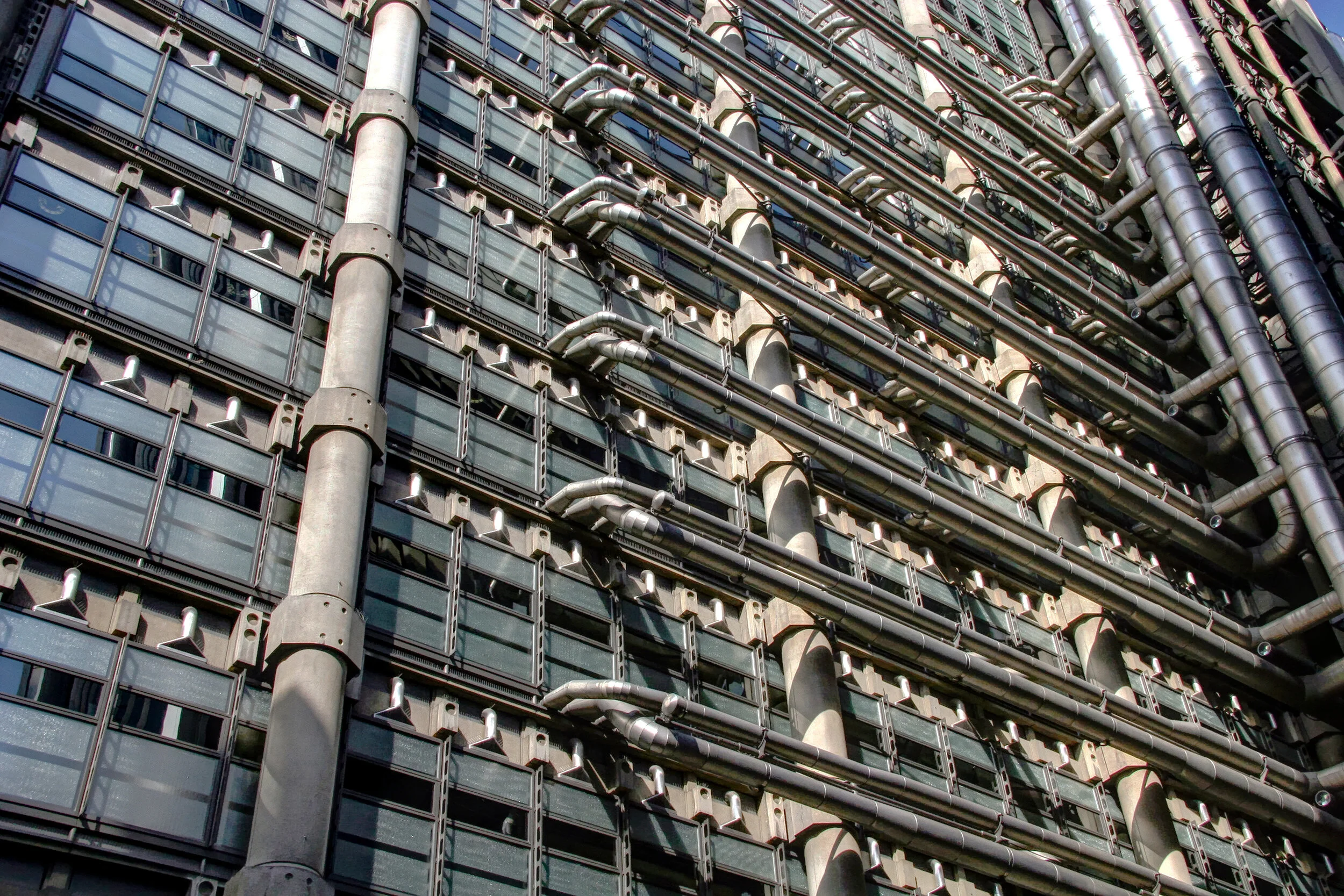
Page 3 of 4
London, England
Lately I'm a desperate believer walking in a straight line
Nestled deep in Hyde Park (or possibly Kensington Gardens), somewhere not all that far from the separate Diana and Albert Memorials, the Serpentine Gallery is a contemporary art museum in a decidedly traditional looking building. Every summer however the gallery shows its true colors by sponsoring and building a temporary pavilion designed by an architect who has yet to build in London. Separate past winners have included Oscar Niemeyer, Daniel Libeskind, Zaha Hadid and Rem Koolhaas, among others. This year's winner was a team including artist Olafur Eliasson and Kjetil Thorsen, one of the guys from Snøhetta. The collaboration this year has been especially well received and deservedly so, a great little building that will be missed when it's closed, destroyed and carted away in pieces sometime next month.
The Serpentine Gallery Pavilion program only started around 2000 but has quickly grown to become an important tradition and major annual architectural event. This year's much loved pavilion had a bit of a rocky road from the start. The original commissioned design by Frei Otto was abandoned after its design proved too impractical to build and Olafur Eliasson and the Snøhetta guy were called in unusually late to quickly design and build a replacement option, a lucky break for me since a later start meant a later closing time- normally the pavilions close down as early as the first week of September- right before Open House Weekend starts and right before I usually have a chance to see them in person.
The pavilion itself is a simple enough spiral, a continuous ramp that leads first to large central space (with a cafe, an oculus, some jagged built in seating and some cool freestanding lights), then along a corridor, then along the roof and right back into the cone to overlook that large central space below . Along the ramp are a series of twisting groups of string providing a very nice visual trick- they appear solid from some angles and very open from others.
Proof of the visual effects of that string wall. Looking down the ramp it almost appears as a solid wall, while on the ramp its shadow gives away the view heading up in the opposite direction. This view also gives you a good feel for the seemingly common materials of such a temporary structure- stained plywood, string, a rubber mat floor, railing, applied lights. Put together it is clearly more than the sum of its parts.
Some background. For anyone who does not know or remember, Olafur Eliasson is a visual artist, the one who captured the sun in the Tate Modern's turbine hall a few years ago and one who will be bringing his (presumably) kick ass traveling show to MoMA and PS1 in New York this spring. And if you've never heard of Snøhetta, they're the Norwegian architectural firm responsible for the Alexandria Library in Egypt and the above ground sections of the World Trade Center museum (eventually) under construction in Lower Manhattan.
It's back to Open House London sites for the rest of the page. After an all modern and contemporary architecture Saturday, we decided to go retro on Sunday, stopping off at some sites of both historical and architectural value starting with the Bank of England (no photography allowed) and then onto places such as Guildhall. Dating back to the 1400s, it survived both the fire and the Nazis and for years has been the civic center of the City of London (which is not to be confused with the city of London, a completely different and much, much larger animal).
Westminster Hall is the oldest part of the British Parliament buildings, you know that building with that often photographed clock tower where the Prime Minister hangs out. It was originally part of Westminster Palace, dates back to 1097 and features a rather ornate and ancient hammerbeam ceiling. While there might not be all that much to do once inside Westminster Hall, it still felt worth all the trouble of a long wait and stringent security check, all for just a few moments inside such an amazingly well kept 900 year old room.
Another hammerbeam ceiling, another carving, another glorious and historic space in a country and world where they are often so easily forgotten.
Middle Temple is another London building just drowning in history- it was founded by the Knights Templar, it was frequented by Queen Elizabeth (the real, Elizabethan one), it held the premiere of Shakespeare's "Twelfth Night" and it was the first stop in London for a returning Sir Francis Drake and still features a table made from a piece of his boat (the globe circumnavigating "Golden Hind" for anyone who still remembers their freshman history classes). Another one of those buildings that makes you realize how special Open House London really is, while at the same time making you wonder exactly what you might be missing inside those 290 (or so) buildings you didn't have enough time to get inside this year.

